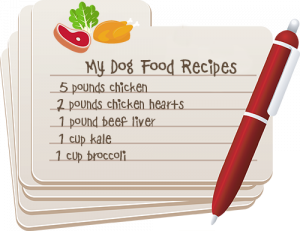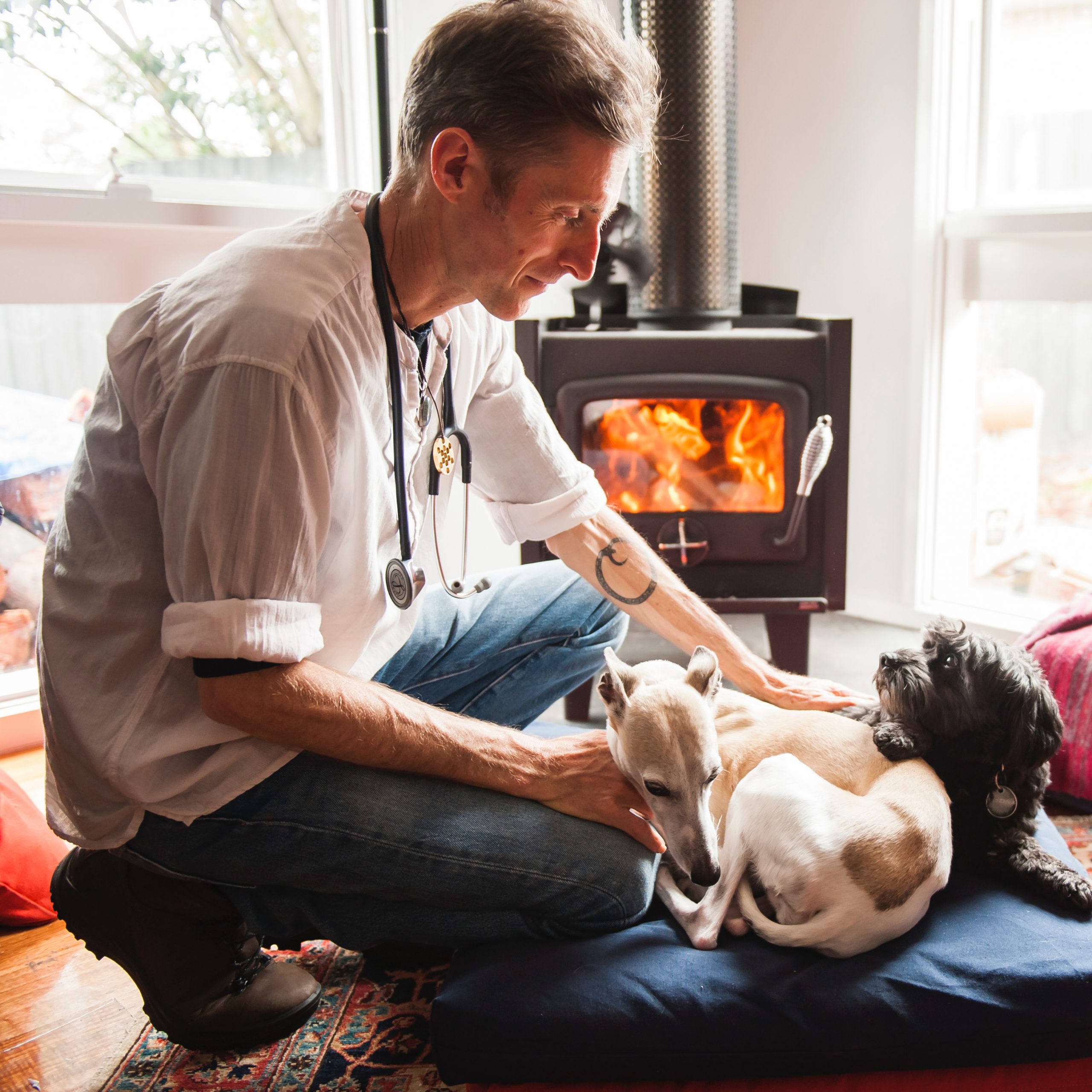Many dogs suffer from anxiety and overarousal issues.
Helping them is a special interest for me in my holistic veterinary practice. So many dogs I see are stuck in a state of overarousal. Their sympathetic nervous system is too elevated most of the time.
These dogs get used to being in an aroused state. So then they find it very hard to regulate themselves and relax. But a healthy dog has an off switch. She becomes aroused when it’s healthy to do so. Then when the stimulus is gone, she can quickly calm herself into relaxation.
When your dog relaxes, the parasympathetic (rest or digest) nervous system switches on. The sympathetic (fight or flight) nervous system becomes less active.
That anxiety is arousal that has nowhere to go. If you have a dog who hasn’t learned how to relax, then all that arousal stays active in her system. The fight or flight nervous system is always running faster than is healthy!
Hypervigilance In Dogs
In that state, adrenaline levels are continually elevated. The dog becomes hypervigilant … and is even more likely to trigger into strong arousal. This is why most anxiety issues tend to get worse over time. Thunder phobia is a classic example.
This state is very unhealthy for your dog in the long run. The elevated adrenaline and cortisol levels caused by continual activation of the sympathetic nervous system depress the immune system.
Of course some dogs are genetically wired to be more on the arousal side of things. This is true of many dogs from working breeds – dogs with high drive like Border Collies, Labradors and so on.
However, there are also many dogs with genetically poor temperaments. These dogs are sharp or shy and far more likely to have anxiety or overarousal problems. Especially if they’re poorly socialized.
Over-vaccination can sometimes stimulate these behaviors. You need to take special care if you have a dog like this to prevent her from getting stuck in arousal mode.
6 Ways To Help Your Dog Learn To Relax
Before I dig into how and why weighted blankets are a fantastic tool to help many dogs with anxiety or overarousal … I want to share a few of the tips I give to all my clients with dogs like this.
1. Make Sure Interactions With Your Dog Are Calming
We humans LOVE to razz up our dogs … scruffing them, stimulating them, making them excited.
If you have an anxious dog, try connecting with a slow, gentle, firm touch. Slow down all your patting or stroking to a quarter or an eighth of the speed. Make your touch connected, calm, and very intentional.
RELATED: 5 Easy Reiki Techniques To Try With Your Dog …
2. Stop All (Or Most) Stimulating Play
If you have a dog with a ball or toy addiction, every time she picks it up, or even sees it … it kicks her sympathetic nervous system into overdrive.
Even if she’s carrying it around all day, this isn’t good for her nervous system. Take all the toys away and hide them in a cupboard. If you must have this sort of play, only do one or two short sessions each day, followed by something calming. A meal, for example, is a good idea.
3. Focus On Scent Based Training And Play
Anything that makes your dog use her nose causes relaxation. Scattering treats in your yard or around the house for your dog to sniff out is a great practice. So is any formal tracking or nosework activity.
4. Get Your Dog Off All Processed Foods And Treats
Processed foods and treats often trigger dogs (a bit like red food dye does to kids). Fresh whole foods are much better for all dogs.
RELATED: Raw Proof: New Research On Species-Appropriate Diets …
5. Try CBD To Relax Your Dog
CBD is a great herbal medicine to help dogs relax. I recommend it for all dogs with anxiety or overarousal issues. Be aware that your dog may seem a little worse for the first week or two though! (Of course, check the legality wherever you live.)
6. Avoid Or Limit Vaccination
Vaccination can trigger many behavioral responses. These include anxiety or fear that stems from brain inflammation. I recommend you avoid over-vaccinating your dog.
For a dog with vaccinosis, consider consulting a homeopathic vet. Homeopathy can help you resolve her issues.
How Weighted Blankets Help Your Dog
Your dog has special deep pressure nerve receptors in her body. When these activate, it causes the parasympathetic (rest and digest) nervous system to switch on. They become more active.
This response bypasses your dog’s mind. It teaches her how to relax at a body level.
Weighted blankets are great! I use them with both my dogs. Pearl has thunder and noise phobias; and Mitzi is genetically on the high drive side of things. He’s very easily excited and can find it hard to switch off. I’ve seen great improvements in both of them after regular blanket sessions.
You should use a blanket that is about 10% of your dog’s body weight. I find heavier blankets, up to 15 or 20% of body weight, can be good too. But only use these heavier blankets for structured, timed sessions … when you’re there to supervise. The extra weight can make it hard for your dog to get up.
Introduce Your Dog To Weighted Blankets Slowly
At first, many dogs will find the sensation of relaxation foreign, uncomfortable … or even unsafe. They are so used to being wired that relaxing is a whole new territory!
You’ll likely have to treat your weighted blanket like a bad tasting medicine at first. You may have to sit with your dog and gently insist that she stay under the blanket. She may need you to do some bodywork to help her get used to deep touch at first.
You may see your dog relax and then startle herself into arousal in the beginning. This is because the body relaxes and then the mind freaks out a little. That’s because she feels like she has to be on full alert all the time in case a tiger tries to eat her.
I call this the arousal-relaxation cycle. I saw both my dogs go through it at first when I started using weighted blankets with them.
I encourage you to give it a go! If Pearl gets triggered by fireworks now, I can help her relax so much more quickly with the blanket.
And Mitzi is much calmer, happier, and less likely to wind himself into a lather when the neighbors come out and hop into their car. (How dare they do this on his street, really!) I’ve also seen many of the dogs I treat in my practice benefit from weighted blankets.
It’s a good idea to treat weighted blankets like a medicine. Do several timed sessions of 5 to 20 minutes with your dog every day.
Eventually, she’ll settle and enjoy it so much that she’ll sit under it for ages. It’s a wonderful, natural treatment that helps anxious dogs build an off switch over time.













